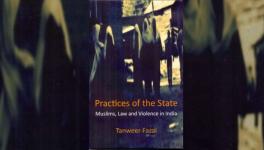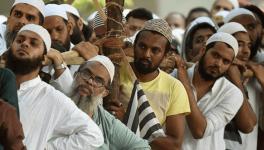No, India Will not Become a "Muslim-Rashtra"
Representational use only.
Religion wise population and their growth have always been a political issue in India, especially when elections are near. We live in a post-truth society in which people emphasise emotions rather than logical thinking, and hence they can easily be fooled by the name of religion. For example, false propaganda has been spread that the Muslim population would outnumber the Hindu population, and India would soon become a Muslim-dominated country. Moreover, people advancing this propaganda believe that Hindus should produce more children to resolve this issue, and the government must restrict the Muslim population by stern policy actions.
Let us discuss whether this claim is based on the data. According to the 2011 census, India’s Hindu and Muslim population share was 79.80% and 14.23%, respectively. Only Jammu & Kashmir and Lakshadweep had a majority Muslim population. Table 1 shows the Hindu-Muslim population and their growth rates since 1951.
Muslim population contributed less than 15% of the total population in India in 2011. However, its share shows an increasing trend. It increased from 9.80% in 1951 to 14.20% in 2011. However, the decadal growth rate of both communities has decreased significantly. Between 1951 and 2011, the Muslim population's decadal growth rate fell by 8.28%, while the decrease for the Hindu population was 6.12% during the same period. It can be realised that the decadal growth rate of both communities is converging, and there is no reason to consider that they would diverge in the future.
According to the Pew Research Centre (PRC), the Muslim population's share would rise to 18.4%, whereas the share of the Hindu population would be 76.7% in 2050. This indicates no chance of having a higher Muslim population in India sooner or later. Furthermore, the Hindu population will outnumber the Muslim population of the four highest Muslim populated countries such as Pakistan, Bangladesh, Indonesia and Nigeria in 2050.
Mainly, there are two possibilities in which the Muslim population can outnumber the Hindu population.
Firstly, when there is no rise in the Hindu population at all. If the Muslim population continues to grow at 24.43% (2001-11 growth rate) and the Hindu population remains the same (0% population growth rate), Muslims can outnumber Hindus in 2091. In other words, the Muslim population can have more than 50% share of the total population by 2091. However, this is an irrational argument because the Hindu population will not remain the same for 70 years. This materialises only if the Hindu birth rate and death rate become equal, not supported by the available data.
Secondly, data does not support the argument that Muslims having a higher population growth rate than the Hindus will turn India into a "Muslim Rashtra". The Muslim population growth rate has been declining since 1951, except for the 1980s. More importantly, the Total Fertility Rate (TFR) also showed a declining trend in the Muslim community. TFR in Muslims was 2.62% according to NFHS-4, which is close to the replacement level of 2.1%. Also, NFHS-3 and NFHS-4 data reveal that TFR in Muslims reduced by a higher proportion than Hindus.
According to Bhatt and Xavier (2005), TFR in both communities would be the same as 2.1% during 2031-41. They also forecast that the share of the Muslim population would be 18.8% in 2101.
According to PRC, TFR in Muslims reduced to 2.6 in 2015 from 4.4. During the same period, TFR in Hindu fell from 3.3 to 2.1. This shows that the gap in TFR has also narrowed down over the period.
Consequently, the religious composition would not change significantly, and India will not become a "Muslim-Rashtra" in due course. The study of Ghosh (2018) has also shown that the TFR in Hindu in states like Rajasthan, Uttar Pradesh, Bihar, and Jharkhand is higher than the Muslim TFR of Tamil Nadu, Andhra Pradesh, and Kerala. This shows that higher population growth is attributed to various socio-economic conditions and not to religion.
Atman Shah is a Lecturer in the Department of Economics at St. Xaviers College, Ahmedabad.
Get the latest reports & analysis with people's perspective on Protests, movements & deep analytical videos, discussions of the current affairs in your Telegram app. Subscribe to NewsClick's Telegram channel & get Real-Time updates on stories, as they get published on our website.
























